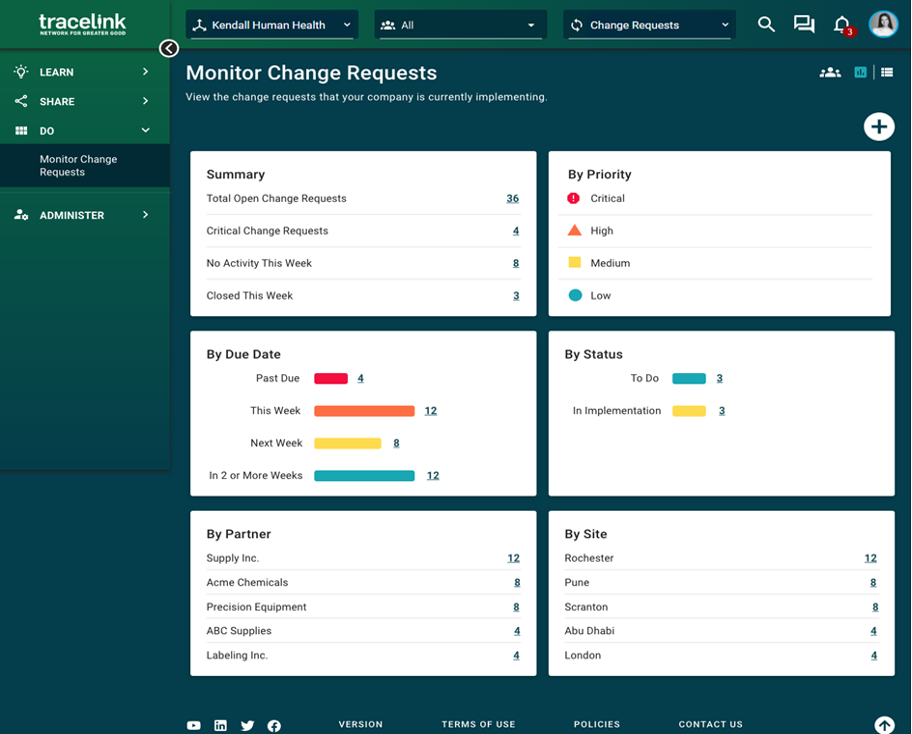Table of contents
The APT-SCIM Change Request solution has proven to be so efficient that one customer has rolled it out to as many as 1,400 partners and more than 600 internal users.
Processing any change request quickly and effectively requires well-choreographed execution on the part of cross-functional teams—and the effort grows increasingly complex as more teams and partners get involved in a multienterprise supply chain context.
A missed or poorly-executed change request can lead to any number of disruptions, from late product shipments to a product being rejected due to incorrect labeling or artwork. In today’s fast-paced supply chain environment, manufacturing organizations and their supply chain teams need to digitalize and streamline the change request process so they can avoid negative business outcomes associated with slow responses, incorrect information, and multiple versions of the truth.
Some of the main reasons why the change request process is challenging include:
- The high volume of change requests coming from supply chain partners
- Failure to segment, assess, and prioritize change requests based on criticality
- Complex change requests that require execution across internal and external teams with different workflows and actions required at each location
- Little to no visibility on the status of change execution, including whether the process is open or closed and who is responsible for next steps
- Inability to understand who is responsible for the next step in the change management process, and if the current version of the plan is the most up-to-date one
TraceLink Agile Process Teams for Supply Chain Issue Management (APT-SCIM) enables you and your partners to more effectively collaborate when submitting, processing, and closing out change requests. Today, supply chain partners typically send change requests to a point of contact via email—but those emails usually go to a procurement person and not directly to the precise department or team that needs to execute the change.
With APT-SCIM, supply chain partner change requests are immediately visible on the Monitor Change Request dashboard, and they can easily be assigned to the responsible departments. The Monitor Change Request dashboard is visible to both you and your partners, ensuring that the right internal and external teams are notified and are working from the same shared source of data. The original change document can be attached to the change request to ensure that the right teams in the right departments are notified and have all the information needed to execute the change.

As change requests arrive, it is important to prioritize them because failure to execute critical changes in a timely manner carries a lot more risk than failure to execute lower-priority changes. APT-SCIM enables change requests to be prioritized, and the priority of the request is clearly visible on the dashboard to ensure managers are aware of all critical and high priority changes. The Status panel on the dashboard tracks the workflow status and the Due Date panel enables everyone to see change requests that may be falling behind. Automated notifications alert users to change requests with approaching due dates.
APT-SCIM enables change requests to be classified so teams can track the reason for a change request. This enables teams to differentiate product or quality changes that need to be executed immediately from less urgent change requests for cost reduction or process improvements.
Often treated as a perfunctory part of the manufacturing process, proper and efficient execution of change requests is a necessity to avoid unnecessary rework or scrap that can result from a missed change.
APT-SCIM centralizes the change request process so that you and your partners have real-time visibility into the status of all open change requests with clear accountability for next steps. The APT-SCIM Change Request solution has proven to be so efficient, one customer has rolled it out to more than 1,400 partners and more than 600 internal users.
Learn more in our Supply Chain Issue Management Resource Center.





